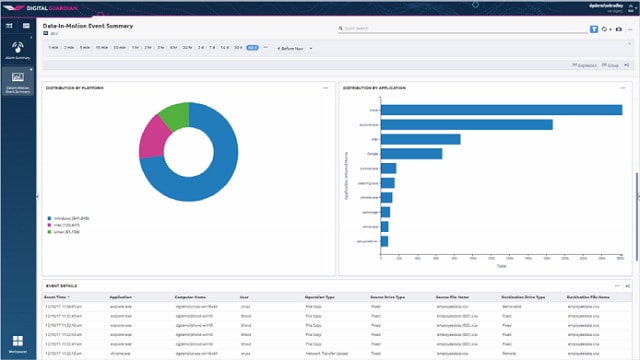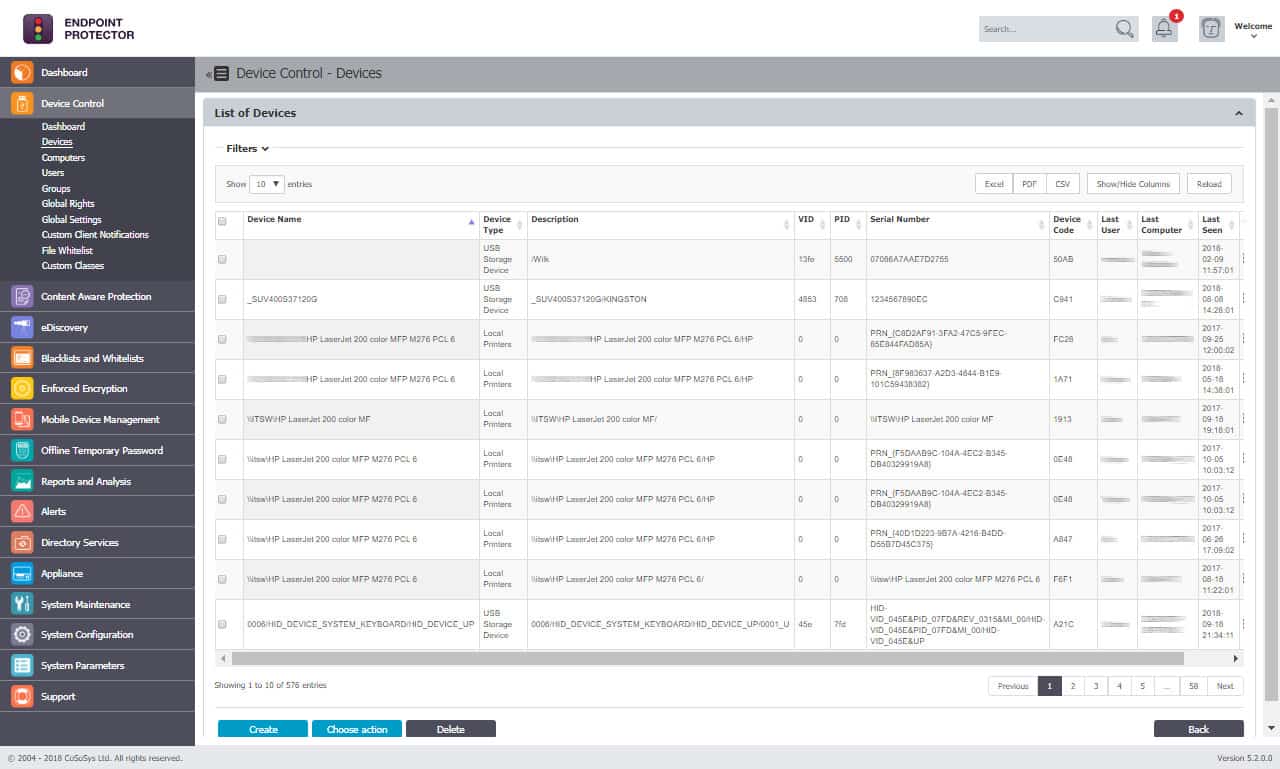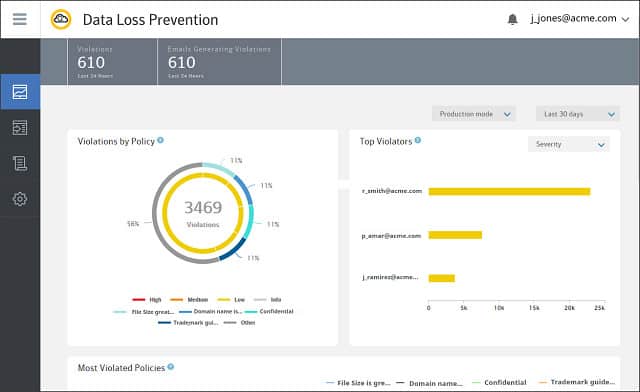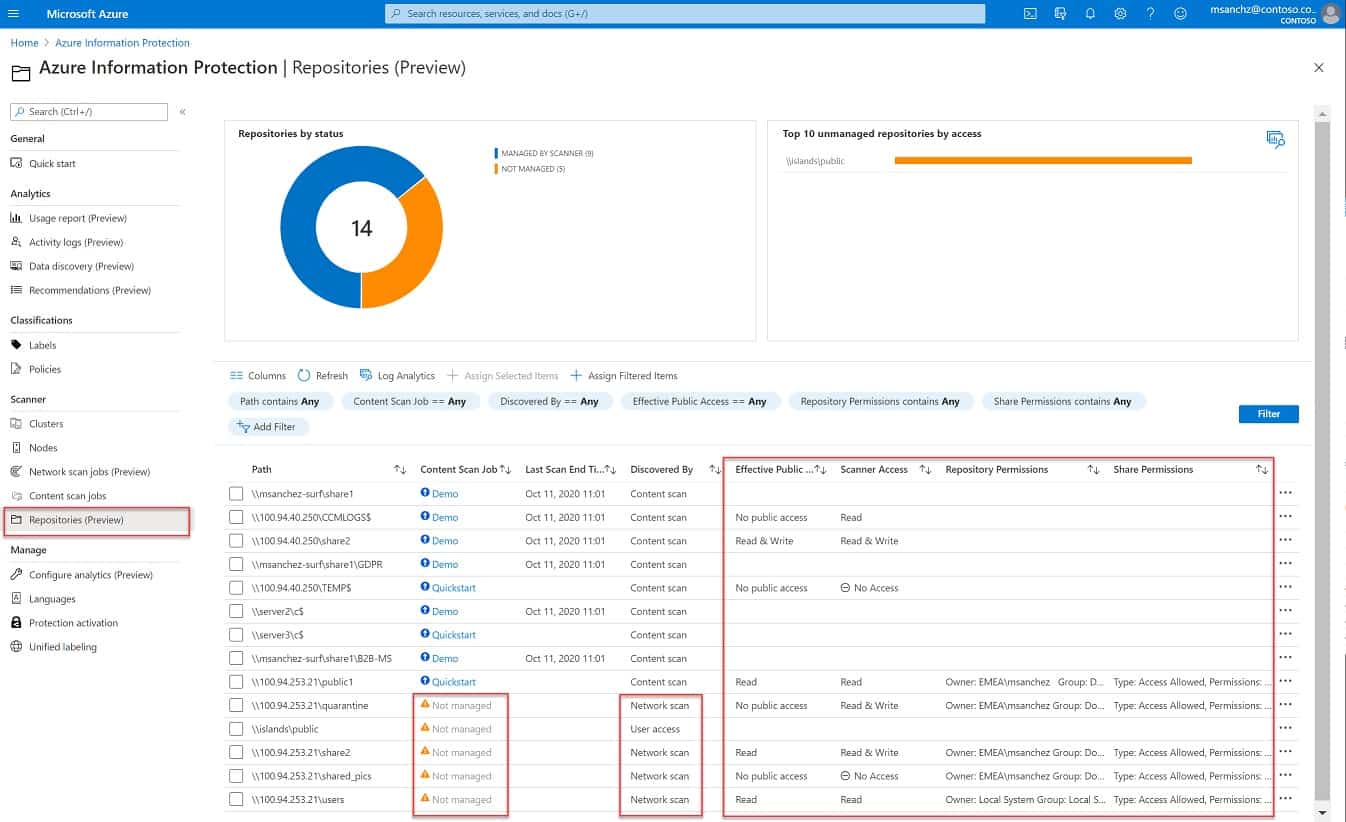Teramind offers a range of threat detection and data protection services that are bundled into packages. You choose a plan that includes all of the modules that you need. This is a very flexible approach to the provision of both threat detection and data loss prevention. So, this solution could save you a lot of money by providing multiple functions. You just need to work out exactly which security systems you currently lack and ensure you don’t over-buy.
Based in Aventura, Florida, Teramind was founded in 2014. In both the threat protection and data loss prevention fields, Teramind is up against some huge brands. Significant competitors in these fields include McAfee, Symantec, and ManageEngine, so Teramind has to work doubly hard to get noticed in the field
Teramind has done an excellent job in meeting the competition head-on. While some big names offer an on-premises solution and others present a SaaS system, Teramind provides both. In addition, the company isn’t shy about quoting its prices, which is another good sign. In an industry that loves to write Contact Us on a significant empty Price List page, Teramind publishes its prices for anyone to see. This is probably because Teramind’s prices are very affordable, so these are one of its marketing strengths.
What does Teramind DLP do?
DLP stands for Data Loss Prevention. However, Teramind DLP isn’t just that. In the Teramind system, DLP is at a plan level. The lower plans in the Teramind package list are all about user monitoring and insider threat tracking. The Teramind DLP package is the company’s top plan, and that adds to data loss prevention. So, with this package, you get productivity tracking and insider threat monitoring as well as DLP. In addition, the package offers data privacy standards auditing and reporting as well.
Teramind contends that its DLP plan replaces many other software packages that you might be considering, not just a DLP service.
How much does Teramind DLP cost?
To fully understand the Teramind DLP offering, you need to get down to its plan pricing. This lets you know exactly what you would be getting with the DLP plan.
There are three plan levels, and those services can be taken as a SaaS package or as a software bundle for on-premises installation. In all cases, the on-premises version is cheaper.
The three plans with their prices are:
- Starter On-premises: $5 per endpoint per month SaaS: $10
- UAM On-premises: $10.42 per endpoint per month SaaS: $20.83
- DLP On-premises: $12.50 per endpoint per month SaaS: $25
UAM stands for User Activity Monitoring.
For each plan, there is a minimum of five endpoints required for an account. Teramind offers lower rates for accounts that cover more than 50 endpoints.
You can get a free trial of Teramind DLP. This lasts for seven days in the Cloud version and 14 days for the on-premises version. You can also look at the live demo of the Teramind DLP system.
Teramind plan services
Each higher plan offers the services included in the lower plans plus other features.
- Starter This plan includes user activity monitoring that covers for Web activity, messaging, and email. It also includes User Behavior Analytics that profiles each user account, looking for malicious or abusive activity. It is also possible to record all actions performed by each account by video or audio. These monitoring activities can be set by policies that automatically apply different monitoring levels to other user groups.
- UAM This plan is heavily geared towards detecting insider threats and also account takeover. The activity monitoring is fully automated with an anomaly detection system that notices if a user account starts performing actions outside its regular activity. The package also includes a dynamic risk scoring system that is useful for the protection of sensitive data.
- DLP this is the only plan that includes data loss prevention features. As well as the insider threat and user monitoring services that the other programs provide, this tool has complete protection for sensitive data stores, covering personally identifiable information, protected health information, and access locations restrictions. This is a good plan for businesses that must comply with GDPR, CCPA, HIPAA, and PCI DSS.
Teramind DLP deployment options
The Cloud version of Teramind DLP doesn’t need a host on your site, but it does require an agent installed. There are agents available for:
- Windows 7 and higher
- Windows Server 2012 and higher
- macOS
- Citrix XenApp and XenDesk
- VMWare Horizon
The on-premises version installs on top of a VM and runs as a virtual appliance. It will run on:
- VMWare ESXi 6.7
- Microsoft Hyper-V
Teramind DLP Pros and Cons
Teramind DLP is a very flexible system suitable for enterprises of all sizes, thanks to its per-device pricing. However, the system isn’t perfect. Here is a summary of the strengths and weaknesses of Teramind DLP.
Pros:
- Extensive insider threat detection functions
- Sensitive data management
- Complete control over data exfiltration channels
- Variable security policies
- Extensive user activity monitoring facilities
Cons:
- No agent software for Linux
Alternatives to Teramind DLP
The lack of any agent system for Linux in the Cloud package is a little worrying. You can get around this problem if you only have Linux endpoints on your system by running the agent package over a VM. Similarly, if you opt for the on-premises version, it doesn’t matter what operating system you run on your site because the Teramind system needs to run over a VM. If you don’t want to be bothered with installing virtualization just for the DLP system, you should probably look elsewhere for your data loss prevention strategy fulfillment.
What should you look for in a Teramind DLP alternative?
We reviewed the market for data loss prevention systems and analyzed the options based on the following criteria:
- A package that works on all operating systems
- An option for a SaaS package
- Features that give extra protection to sensitive data
- Insider activity tracking to spot account takeover
- Data privacy standards compliance
- A free trial or a demo system for a no-cost assessment
- A good deal that offers a price within reach of all sizes of business
We created a shortlist of data loss prevention systems that we are happy to recommend with these selection criteria in mind.
Here is our list of the five best alternatives to Teramind DLP:
- Digital Guardian DLP This cloud-based data loss prevention platform tracks activity on endpoints, and networks control data movements. Endpoint agents for Windows, macOS, and Linux.
- Endpoint Protector This SaaS data loss prevention package works through endpoint agents to spot threats and block data theft. It is a good choice for businesses that need to show standards compliance
- Symantec Data Loss Prevention An package for installation on site. This system includes controls on data exfiltration points and sensitive data discovery and classification. It runs on Windows Server, Linux, or over a VM.
- ManageEngine DataSecurity Plus A package of three modules that can be bought individually and include a data loss prevention system. It runs on Windows Server.
- Azure Information Protector A protection system that focuses on sensitive data and can monitor activities on any endpoint anywhere.
You can read more about each of these options in the following sections.
1. Digital Guardian DLP
Digital Guardian DLP is a SaaS platform that issues controls from its cloud location to any endpoint you enroll in the monitoring service. As a result, you can consolidate the security of multiple sites and also cloud services. In addition, the system performs live monitoring of networks as well as endpoints.
The centralized functions of Digital Guardian DLP audit your access rights manager to improve the granularity of user account permissions. It is in the dashboard of the cloud server that you specify security policies. These can be applied by selecting a template from the library of Data Guardian. There are templates available for all of the significant data privacy standards.
Once you have improved the permissions structure and specified security policies, the server sets up the endpoint agents to scan sensitive data. The scanner also classifies each data instance – some will be categorized as pertinent to the standards you set. In contrast, others will be regular transaction information that doesn’t need stringent protection. The system looks for personally identifiable information (PII) and intellectual property.
Pros:
- Sensitive data discovery and classification
- Includes a threat detection system
- It can be tailored to a data privacy standard
Cons:
- Prices are not revealed immediately
Digital Guardian DLP controls data exfiltration points and also acts as a threat detection system. There are endpoint agents available for Windows, macOS, and Linux. You can assess this system with a demo account.
2. Endpoint Protector
Endpoint Protector is a cloud-based data protection system that installs agents on endpoints to implement controls. Those endpoint protection units are entirely independent to continue implementing security even when the device is disconnected from the network.
Endpoint Protector is a lot like a SIEM because all endpoint agents gather log messages, generate activity reports, and then upload that information to the server for the system in the cloud.
This package includes sensitive data discovery and a classification service that identifies data stores that need extra protection. In addition, the service can impose encryption on files at rest and in motion to strengthen security.
The central system allows for the creation of security policies. These dictate how data controls are going to be applied. These strategies are then communicated to the endpoint agents for implementation. The server also scans through your access rights manager and improves the permissions structure for tighter security.
Parts of the activity reports that the endpoint agents generate rely on user and entity behavior analytics (UEBA). This profiles each user account and checks on the regular system processes run on the endpoint. Once those baselines of regular activity have been established, the endpoint agent looks for deviations in behavior. This is a classic threat detection strategy, and it helps to identify insider threats and account takeovers.
The endpoint agents watch over data exfiltration points, including USB memory sticks, printers, emails, and file transfer systems.
Endpoint Protector is a great Teramind DLP alternative because it had a more comprehensive range of deployment options. It includes endpoint agents for Windows, macOS, and Linux. This service offers threat detection as well as data loss prevention, just like Teramind DLP. In addition, it consists of discovering and classifying sensitive data, which makes it an excellent choice for businesses that need to comply with a data privacy standard.
Pros:
- Improves access rights management
- Implements sensitive data discovery and classification
- Imposes encryption at rest and in motion for sensitive data
- Controls data exfiltration channels
- Combines endpoint, network, and cloud security monitoring
- Offered as a SaaS platform or as a service on major cloud systems
Cons:
- A complete SIEM would be nice
Endpoint Protector can be accessed as a service on AWS, Google Cloud Platform, or Azure for a fee. The producers of Endpoint Protector, CoSoSys, also offer the service as a SaaS platform. There are endpoint agents for Windows, macOS, and Linux. It is also possible to get the software to run as a virtual appliance on your site. You can access a demo to assess the service.
3. Symantec Data Loss Prevention
Symantec Data Loss Prevention includes security monitoring for endpoints, networks, storage devices, and cloud platforms. This is an on-premises package, but it can also monitor activities on cloud platforms.
As with most DLP systems, you first need to set up security policies. It is possible to select a template that includes all of the settings required for a specific data privacy standard. This is the kernel of the data protection strategy that is then applied to the data locations on your system. The system searches files, databases, and cloud storage. Data controls and access can be enforced through encryption. All data access events are recorded.
The Symantec Data Loss Prevention package is available for Windows, Windows Server, macOS, and Linux.
Pros:
- Sensitive data discovery and classification
- Controls over data access that are enforced with encryption
- Covers cloud services as well as on-premises activities
Cons:
- No free trial
- Not available for Windows 10
4. ManageEngine DataSecurity Plus
ManageEngine DataSecurity Plus is an on-premises package split into three modules: File Server Auditing, Data Leak Prevention, and Data Risk Assessment. Each unit is charged individually so that you can buy one, two, or all modules.
The Data Risk Assessment unit performs a discovery and classification service for sensitive data. This looks for instances of personally identifiable information (PII) and protected health information (PHI).
The File Server Auditing module performs file integrity monitoring (FIM). This logs all activity on files, recording which user accessed the file and what actions were performed.
The Data Leak Prevention system monitors endpoint usage and mainly monitors data exfiltration points, such as USB slots and emails. In truth, you need all three modules to protect data effectively.
Pros:
- Sensitive data discovery and classification
- File activity tracking
- Control of data movements through USB ports, emails, and file transfers
Cons:
- You need all three modules
ManageEngine DataSecurity Plus is available on Windows Server, and you can get it on a 30-day free trial.
5. Azure Information Protection
Azure Information Protector is a service that is offered on the Azure platform. However, this service can protect data held on other platforms and any of your sites. So, it isn’t limited to monitoring data held on Azure. You don’t need to store any data on Azure to use this service.
On starting with this service, you need to set up security policies in the console. This dashboard can be accessed through any standard Web browser, and it is possible to create policies that will enforce compliance with a data privacy standard.
The system installs an agent on the network that is going to be monitored. This program scans all connected endpoints, looking for data stores. It classifies them by importance to the security policy. Protection features in this package include file copy tracking and document watermarking.
Pros:
- Sensitive data discovery and classification
- Watermarking and copy tracking
- Controls for USB ports, emails, printers, and file transfer utilities
Cons:
- It doesn’t include UEB
L’article Teramind DLP Review & Alternatives est apparu en premier sur Comparitech.






0 Commentaires